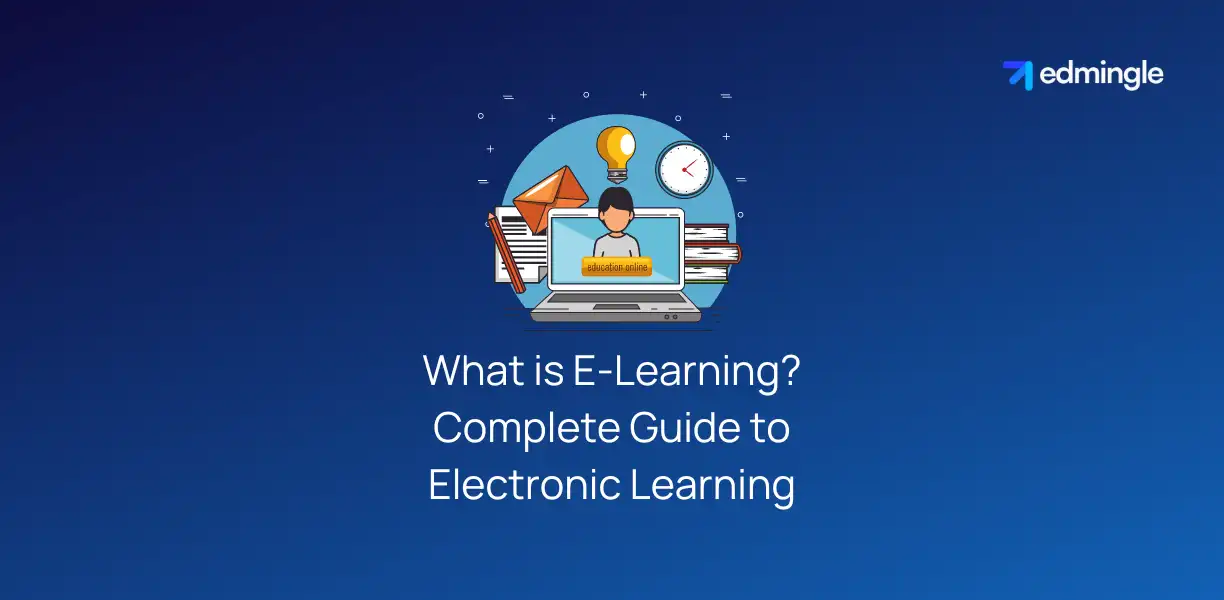
We live in an era dominated by technology. So why should learning lag behind?
The landscape of education is transforming. And while an LMS is at the forefront of this change. Training has become far more convenient with the concept of e-learning.
Even more so accessible from the palm of our hands under m-learning.
In this blog, we’ll explore in depth “what is elearning?”. While delving deep into its evolution, benefits, limitations, various types & delivery methods.
What is E-Learning?
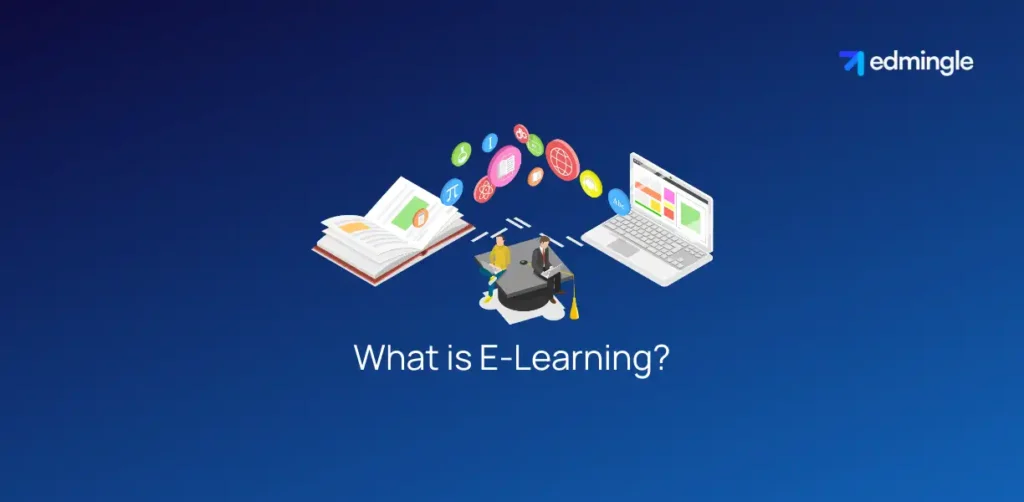
E-learning, short for “electronic learning”. It refers to the use of digital tools & technologies to access educational content. Typically, outside of a traditional classroom.
It encompasses a wide range of modalities. From online college courses and training sessions to webinars & instructional videos.
It provides learners with the flexibility to learn at their own pace and from any location. Hence, making education more accessible and personalized.
We’ve to also remember that its not just a trending keyword. But a significant shift in how we impart and receive education.
Key Benefits of E-Learning (For Organizations & Learners)
A crucial starting point is understanding its impact and benefits. While this new way of instruction is often perceived as an alternative to traditional learning methods. It offers advantages that extend far beyond convenience.
For Organizations:
| 1.Cost-Efficiency: These initiatives reduces costs in several ways. By eliminating the need for physical infrastructure, printed training materials or on-site instructors. | 2.Scalability: Whether you’re a startup training a team of 10 or an MNC educating 1000s. E-learning platforms can cater to varied sizes. |
| 3.Consistent Training: It ensures that every participant receives consistent & standardized information. Regardless of when or where they access the content from. | 4.Flexibility & Autonomy: Users can access learning content at their convenience. Resulting in better retention & completion rates. |
| 5.Data-Driven Insights: Modern platforms come equipped with real time analytics. The insights from these ensure a personalized learning experience. | |
For Learners:
| 1.Personalized Online Learning Experience: With adaptive algorithms, each student gets a tailored path. Ensuring better comprehension and retention. | 2.Accessibility: Learning is no longer bound by geographical or time constraints. Learners can access content at anytime, from anywhere. |
| 3.Interactive & Engaging Learning: Content is now available in multiple formats to cater to various learning styles. | 4.Immediate Feedback: This allows them to identify and address gaps right away. |
| 5.Global Exposure: Via discussion forums or groups, learners connect with peers & experts worldwide. Hence, facilitating knowledge exchange, networking & a holistic development. | |
In short, for both organizations & learners, e-learning has a transformative potential. It isn’t just a part of education today; but fast becoming its backbone.
Explore Edmingle’s Scalability & Flexibility.
7 Possible Limitations of Electronic Learning

While it has gained immense popularity and has reshaped the landscape of education. It’s essential to balance our enthusiasm with a sobering look at its limitations.
Please note that all these challenges are just probable ones; and can be easily mitigated. Owing to a proper implementation strategy.
1.Lack of Personal Interaction:
While online forums and video conferencing attempt to bridge this gap. They often can’t replicate the depth and authenticity of human touch.
This can sometimes result in feelings of isolation among online learners.
2.Technological Challenges:
Not everyone has access to high-speed internet or advanced electronic devices. This digital divide can hinder one’s ability to participate fully in online opportunities.
Additionally, glitches, software incompatibility or platform downtimes can disrupt the entire learning process.
3.Self-Discipline & Motivation:
It typically demands a high degree of self-discipline for self-paced learning. Without the structured environment of a traditional classes, some students may struggle with procrastination or a lack of motivation.
Read our article on Key Techniques for Motivating Students to Learn More.
4.Evaluation & Authenticity Concerns:
Assessing a student’s performance remotely can pose challenges. There already are concerns about the authenticity & effectiveness of online examinations.
To make this more efficient, check our article on online assessments & proctoring.
5.Limited Practical Exposure:
For courses that require hands-on exposure or practical training, this approach might not be entirely sufficient. Virtual simulations can’t always replace real-world experience.
6.Over-reliance on Screen Time:
Prolonged exposure to screens can lead to health concerns. Including eye strain, postural problems and other physical ailments.
Strike the right balance between screen time and hands-on. With our Medium Article on the Perfect LMS Strategy for E-learning.
7.The Mindset of One-Size-Fits-All:
E-learning must be approached & implemented with an open mind. One that understands learners have different preferences, pace and styles. In a modern world like today’s, the one-size-fits-all doesn’t work anymore.
Learn more about this in our blog on future of training businesses.
In short, while it offers numerous advantages, it’s not without its challenges. And recognizing these is the first step towards addressing them.
Uses of E-Learning
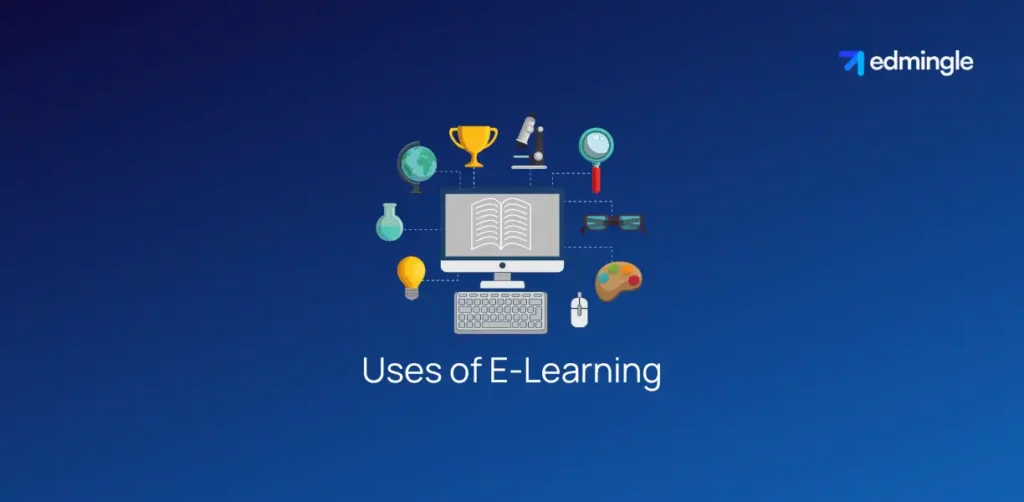
E-learning’s versatility can be seen in its vast array of applications across different sectors. Some of which are:
- Formal Education: Educational institutions are harnessing it for blended learning programs/curriculums.
- Corporate Training: Organizations are using it to boost employee competencies.
- Skill Development: Various online learning platforms offer specialized courses for professional development/skill enhancement.
- Certifications & Continuous Education: Professionals upskill for advanced credentials and keeping up with industry trends.
Also read about Hybrid Learning.
7-Step Working of E-Learning Programs
Since now we know about its pros and cons, along with its use cases. We’ll dive deep to find out how a program works, step-by-step. Here’s a brief breakdown:
| Step 1: Creating Content Educators or content creators design digital courses using various multimedia elements. Including text, videos, animations and simulations. | Step 2: Selecting a Platform The content is uploaded to an e-learning platform or an LMS. Popular platforms include Edmingle, Moodle and Blackboard. |
| Step 3: Making it Live Once the course is live, learners can enrol and begin learning. | Step 4: Interactive Journey With components like quizzes, discussion boards & gamified elements. Learners can have an enjoyable journey. |
| Step 5: Taking Assessments & Feedback Once an assessment is taken, instant feedback can be provided via the platform. | Step 6: Result Generation & Certification After successful scores/completion, learners may receive certificates for their newly acquired knowledge or skills. |
| Step 7: Updating Continuously The existing content can be easily updated. Whenever there’s a new update in the industry or field of the course/program. | |
Through these steps, it offers a flexible, efficient and often cost-effective way of acquiring knowledge or skills. Accessible to anyone with an internet connection.
Also read about E-learning accessibility.
7 Best E-Learning Platforms of 2024
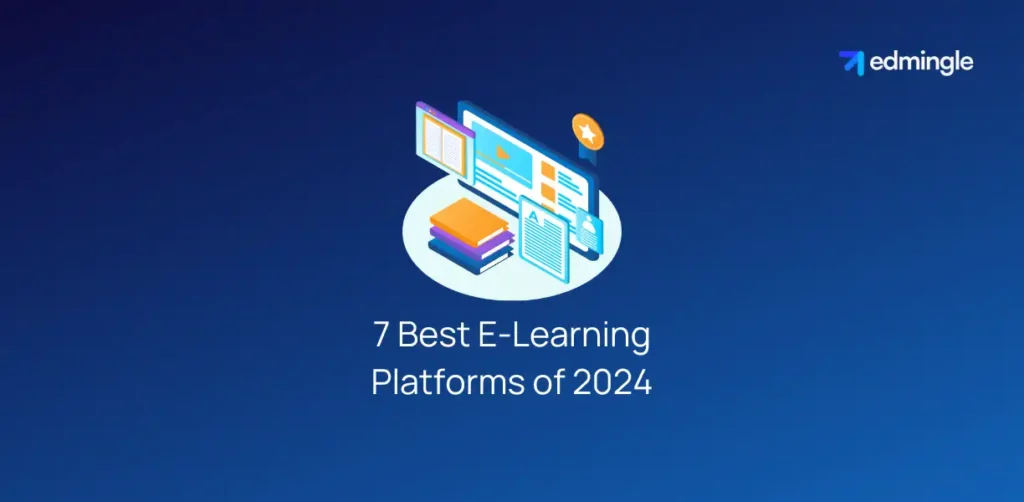
In the past decade, this revolutionary concept has shifted from just a niche pursuit to a mainstream phenomenon. Changing entirely the way we perceive education.
Without further a wait, here are the 7 best platforms of 2024.
1.Edmingle
Emerging as a holistic solution, Edmingle delivers a seamless SaaS LMS experience. It stands out with its wide range of useful features & integrations.
Some of its highlight offerings include:
- Streamlined multiple batch & branch management
- 100% white-labelled website, landing pages & mobile app (both Android & iOS)
- 24/7 multi-channel customer support & service
Serving 2M+ learners across 130+ countries, it’s widely commended for its ease of use, navigation & course delivery.
2.Thinkific
Thinkific is particularly favored by creators and businesses aiming to craft and sell online courses under their brand. It comes with a user-friendly interface & comprehensive customization options.
3.Udemy
Udemy offers an expansive library of over 150,000 courses across a broad spectrum of subjects. Its a flexible & user-friendly platform.
4.Teachable
With its user-friendly course creation tools and robust analytics, Teachable is highly effective. It is also flexible in terms of monetization strategies.
Also read our step-by-step guide on How to Create an Online Course.
5.Podia
Podia has carved a niche for itself by focusing on individual creators. What sets it apart is its no-commission model, just like Edmingle.
6.Kajabi
Kajabi positions itself as an all-in-one business platform for educators aiming to build a brand. It offers website building, email marketing and course creation all under one roof.
Also read our Medium Article on Using AI for Course Creation.
7.Coursera
Coursera, in collaboration with top universities & organizations worldwide, offers courses on a plethora of subjects. From professional certificates to degrees, it ensures quality education is accessible to all.
Out of this list, while Udemy and Coursera are more like online course marketplaces. The others are full-fledged learning management systems. Your choice of platform, however, depends on your unique needs & objectives.
Selecting the Best E-Learning Platform
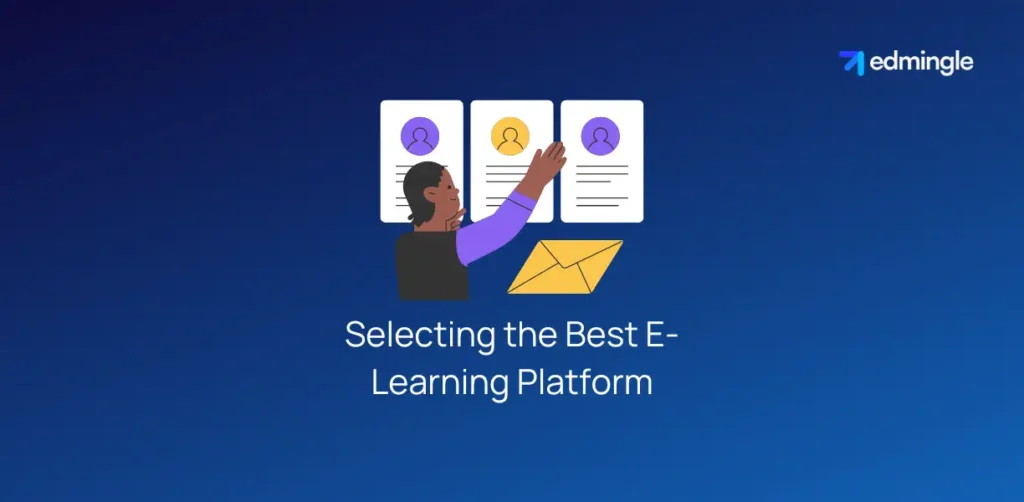
Choosing the best platform requires a clear understanding of your educational needs and goals. Here’s a brief guide on helping you select the best for you.
- Begin by identifying the size & nature of your audience. The type of content you’ll be delivering (videos, quizzes, simulations). And any specific features you need (like mobile accessibility or gamification).
- Then, consider the scalability, cost and user-friendliness of the platform.
- Reading user reviews, testing with a trial version & comparing integration capabilities with other tools can also guide your decision.
- Lastly, ensure that the platform provides robust analytics. Helpful for tracking & optimizing learner experience.
The list of references mentioned in the table below can help you effectively choose the right platform for your programs.
5-Step Guide to Successfully Launching an E-Learning Program
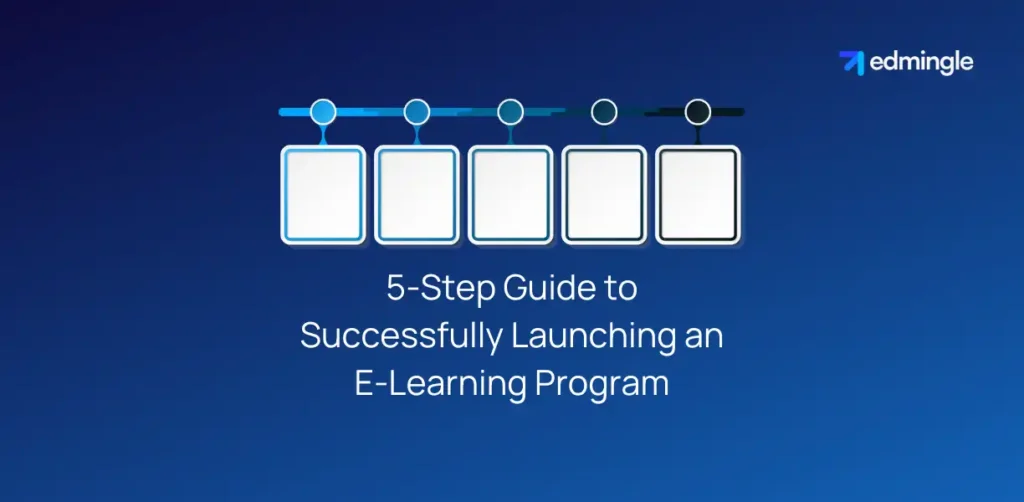
Launching a program can be a transformative step for educational institutions, small businesses or even individual trainers.
Here’s a simplified guide on how to launch one in 5 steps:
Step 1: Needs Assessment & Goal Setting
- Identify the Need: Determine the problems you’re trying to solve. Are you aiming for employee training, educate students or offer specialized courses?
- Set Clear Objectives: What outcomes do you expect from the program? Whether it’s improving skill sets, offering certifications, or enhancing employee performance. Have a clear vision.
Step 2: Content Development
- Source Content: Decide whether to create original content, repurpose existing ones or source from third parties.
- Choose the Right Format: Depending on your audience, decide on the type of educational materials you’ll provide. This could be videos, interactive simulations, PDFs, quizzes, etc.
- Ensure Quality: Ensure that the content is accurate, engaging & meets the set objectives.
Step 3: Technology & Platform Selection
- Platform: Whether an LMS suits you the best or an online course marketplace. This choice depends totally on the objectives you want to achieve via your program.
- Interactivity Tools: If you’re including quizzes, simulations or interactive modules. Ensure you have the right tools or plugins. For instance, Mettl integration is important for coding assessments on an LMS for coding.
- Mobile Learning Optimization: Ensure the platform is accessible & responsive on mobile devices or digital devices.
Step 4: Pilot Testing & Feedback Gathering
- Run a Beta Version: Before a full launch, offer the course to a small group. This helps identify any tech glitches or content gaps.
- Gather Feedback: Get insights from the pilot group. Specifically on user experience, content relevance & the overall journey.
- Refine the Course: Use the feedback to make necessary adjustments.
Step 5: Launch & Continuous Improvement
- Promote the Launch: Announce the launch via email campaigns, webinars, social media or internal communications.
- Monitor & Analyze: Use analytics tools integrated into your LMS. To monitor user engagement, quiz results and course completions.
- Iterate: Regularly update the content for better learning outcomes. Based on new information, technology upgrades or feedback from the learners.
Remember, the modern instruction/training environment is dynamic. Stay updated with new trends & e-learning tools to ensure your program remains relevant and effective.
Conclusion
Through our exploration of the deep waters of e-learning, it’s clear its a digital revolution. One that is reshaping the educational landscape in numerous ways.
From the flexibility & accessibility to the cost-efficiency and scalability. It has firmly established itself as a cornerstone of modern online education.
However, it’s not without its challenges. Yet, despite these hurdles, the potential of e-learning to enhance & democratize education is undeniable.
E-learning doesn’t just transform education but also underscores the importance of continuous improvement and adaptation.
FAQs on E-learning
1.What is eLearning development?
eLearning development involves creating interactive electronic content. Through stages like ideation, curriculum planning and multimedia integration. It’s then deployed on an LMS for users.
2.What is the difference between e-learning and online learning?
Online learning is a subset of e-learning. It specifically denotes education that is delivered via the internet. This means that while all online learning is e-learning, not all e-learning is necessarily online.
3.What is the difference between e-learning and distance learning?
E-learning is a subset of distance learning, which is an older concept. It refers to any learning that happens without the learner being physically present in the classroom. This can include correspondence courses via mail, radio, television broadcasts and more recently, internet-based courses.
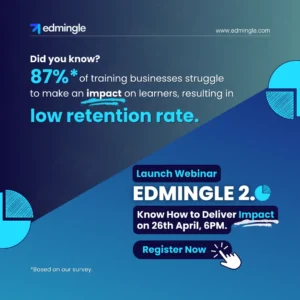
Leave a Reply